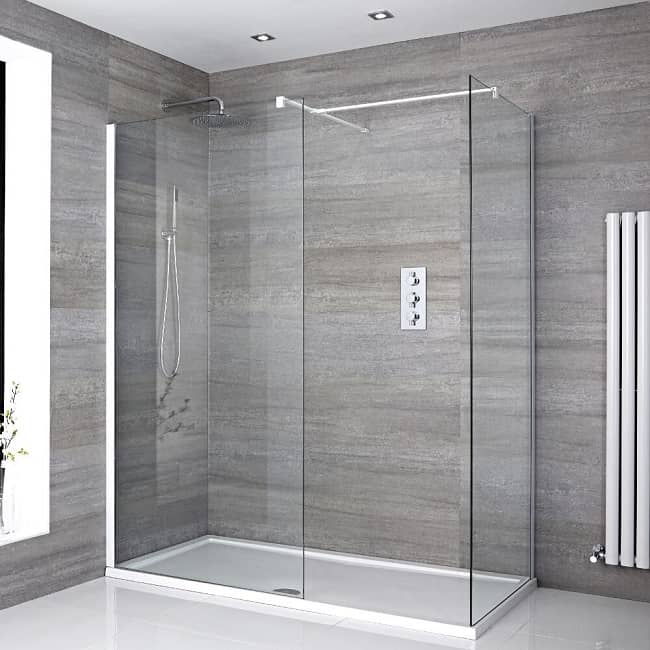Just about everyone has got their personal opinion when it comes to How to Install a Shower Enclosure .

A successful shower setup needs careful planning and also a lot of job. Most of the times, you will require to do three kinds of tasks: mounting walls, installing the plumbing, and also completing walls.
Different Types of Shower Units
Most Usual Errors
Preparation.
First of all, you have to decide on the type of shower that you wish to set up. It is very important to determine whether the picked shower is capable of handling certain systems and also can manage a risk-free degree of water through the boiler. A lot of shower devices nowadays are developed to be adaptable to different water pressures (such as stored hot water as well as cool mains).
It is likewise vital to take into consideration the water stress and the preparation of the piping as well as drain for the shower.
Technique.
Relying on the kind of shower you wish to mount, the shower head should either be fitted in order to avoid its contact with the water in the bathroom listed below or the base tray, or it must have a check shutoff.
Before starting, it is advisable to note the positions of the shower head and control, and also to prepare the pipe-work entailed. In addition, the water drainage system to remove the drainage will certainly require to be intended. Both placements of the cable course and the shower button will certainly additionally need to be thought about if an instantaneous or electrical shower system is being mounted.
Make use of the instruction overview given with the shower unit to fit the shower control.Before fitting the pipelines that will supply the water to the shower system, it is very important to remove the water system. In order to shield the pipelines, they must be provided a water resistant covering as well as likewise fitted with isolating valves. The pipes can then be hidden into the wall and glued over to neaten the total look.
Fit the base tray, shower head, as well as fittings.
Connect the main shower control to the pipes that will certainly be supplying the water (This may call for a female screw thread adapter).
Reconnect the water and also examination the pipes for any kind of leaks, as some might need tightening.
If you are installing an electric shower, remember to turn off the power supply before making any kind of electric connections. As soon as these links have been made (there should be guidance within the user's manual), the power supply can be switched back on.
Readjusting Water Pressure to Match Your Shower.
The cold water tank can be lifted to a better elevation (sometimes just 150mm (6inches)) by fitting a solid wooden assistance below it - perhaps made up of struts and blockboards. If you select this alternative, the major and also distribution pipes will certainly additionally need to be increased to satisfy the new elevation of the storage tank.
Conversely, a booster pump (a solitary pump or a dual/twin pump) can be fitted. Whichever type is chosen, it must be attached right into the power supply in order to run.
Piping and also Water drainage.
It is best to use 15mm size supply pipes, and also make the runs to the shower as short as well as straight as feasible so regarding preserve optimal pressure and also reduce heat loss. In addition, by reducing making use of joints for pipeline corners, you can lower the resistance in the flow of the water system. You can accomplish this by bending the pipelines rather.
How Do You Install a Shower? Follow This Guide
Installing a Shower at a Glance
Tools & Materials: Level, electric drill, caulk, hole saw, cedar shims, shower unit Step 1: Drill pilot holes Step 2: Prep fixture holes Step 3: Move unit into place Step 4: Caulk corners and base Step 5: Attach door Step 6: Install shower pan Whenever plumbing is involved in a DIY project, people worry about what might go wrong. The truth is that installing a shower isn’t that complicated, and you can save a lot of money by doing it yourself. You shouldn’t need to make any alterations to your plumbing to complete the job, and most of the tools you need will be provided in your new shower kit.
Can I Install a Shower Myself?
Even if you’ve never installed a shower before, you’ll find this to be a project that is perfectly suited for DIYers with a moderate level of experience. Whether you're doing a bathtub conversion or installing a new stall, most of what you need comes in shower kits that you can purchase from a hardware store. The first thing you need to do is determine what type of shower stall you want.
Single-panel stalls are the easiest to install because they come preassembled. All you need to do is put them in place. Multi-panel showers require a few additional steps, but you’ve got more control over the appearance of your unit. Multi-panel units are also much easier to handle if you’re going to do the installation without any help.
Be sure to take all appropriate safety precautions, such as wearing eye protection and gloves. When you’re removing or installing a shower unit, you might kick up debris that could hurt your eyes. You’ll also need to work with equipment that will get extremely hot, so be sure to have safety gloves handy.
Tools and Materials
2- to 4-foot level Electric drill with a 1/8-inch drill bit Caulk 2-inch hole saw Cedar shims The unit itself Before You Begin: Prep the Space
It’s highly important to measure your space accurately before putting the stall in. Measuring from the floor upward and from each corner outward will ensure you’ve got the right measurements. What you’re looking for is where the plumbing apparatuses are going to come through the stall. Transfer these measurements over to the back of your unit by drawing the locations of these holes using a pencil or marker.
Pull out your old shower and make sure to scrape off all the old caulking. Be thorough because you want to work with smooth surfaces for the best installation. Once you’ve pulled out your existing shower, you need to make sure that the floor is clean and dry. The best way to clean debris is with a shop vacuum, as it’ll soak up water and dirt together.
If you’re experiencing any plumbing issues, such as low water pressure, this is a perfect opportunity to solve them. Make sure that the pipes themselves are not in need of patching and clean your showerhead. When you turn the water back on after your project, check the pipes for signs of wear or disrepair. Anything beyond minor repairs should be handled by a plumber, and this is the best time to bring in a professional.
If the floor has any moisture at all, don’t proceed until it’s completely dry. The last thing you need is for the floor to rot or invite mold and mildew into your base. Once everything is dry, apply waterproof wallboard to the walls. This can be attached with screws or nails, then sealed with caulk so that water doesn’t seep into any crevices.

I came across that blog posting about How to Install a One-Piece Shower Unit while exploring the search engines. Are you aware of someone else who is fascinated about the subject? Be sure promote it. Thanks a bunch for your time. Don't forget to come visit our website back soon.
Local favorite for plumbing emergencies.
 Luke Perry Then & Now!
Luke Perry Then & Now! Rider Strong Then & Now!
Rider Strong Then & Now! Tia Carrere Then & Now!
Tia Carrere Then & Now! Jurnee Smollett Then & Now!
Jurnee Smollett Then & Now! Batista Then & Now!
Batista Then & Now!